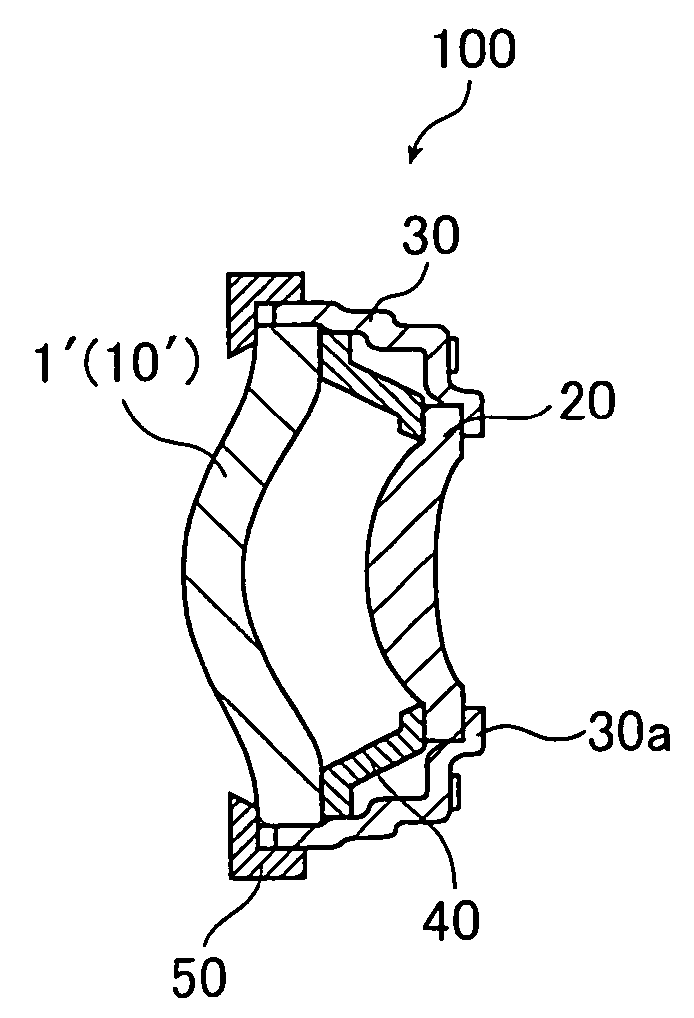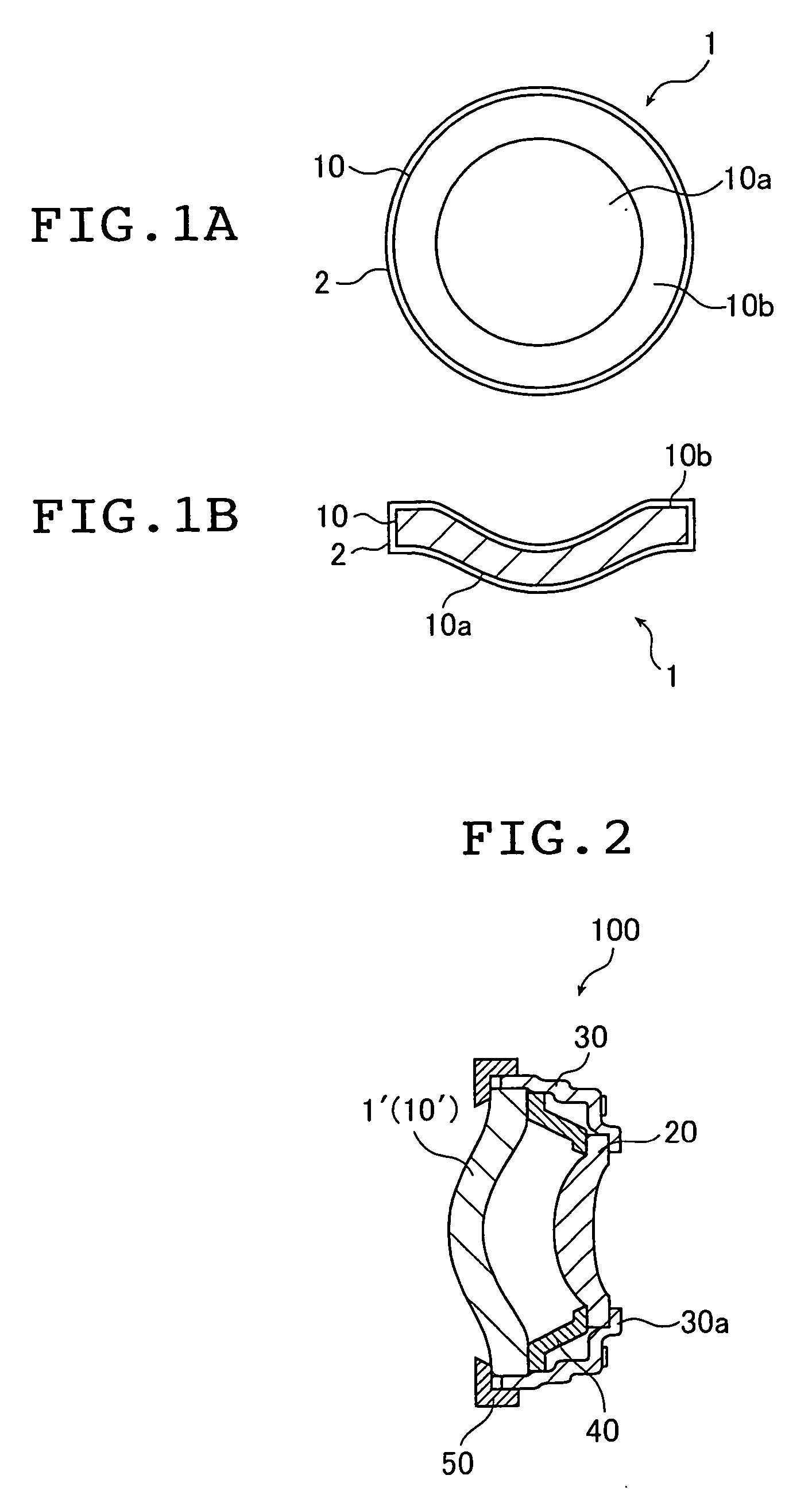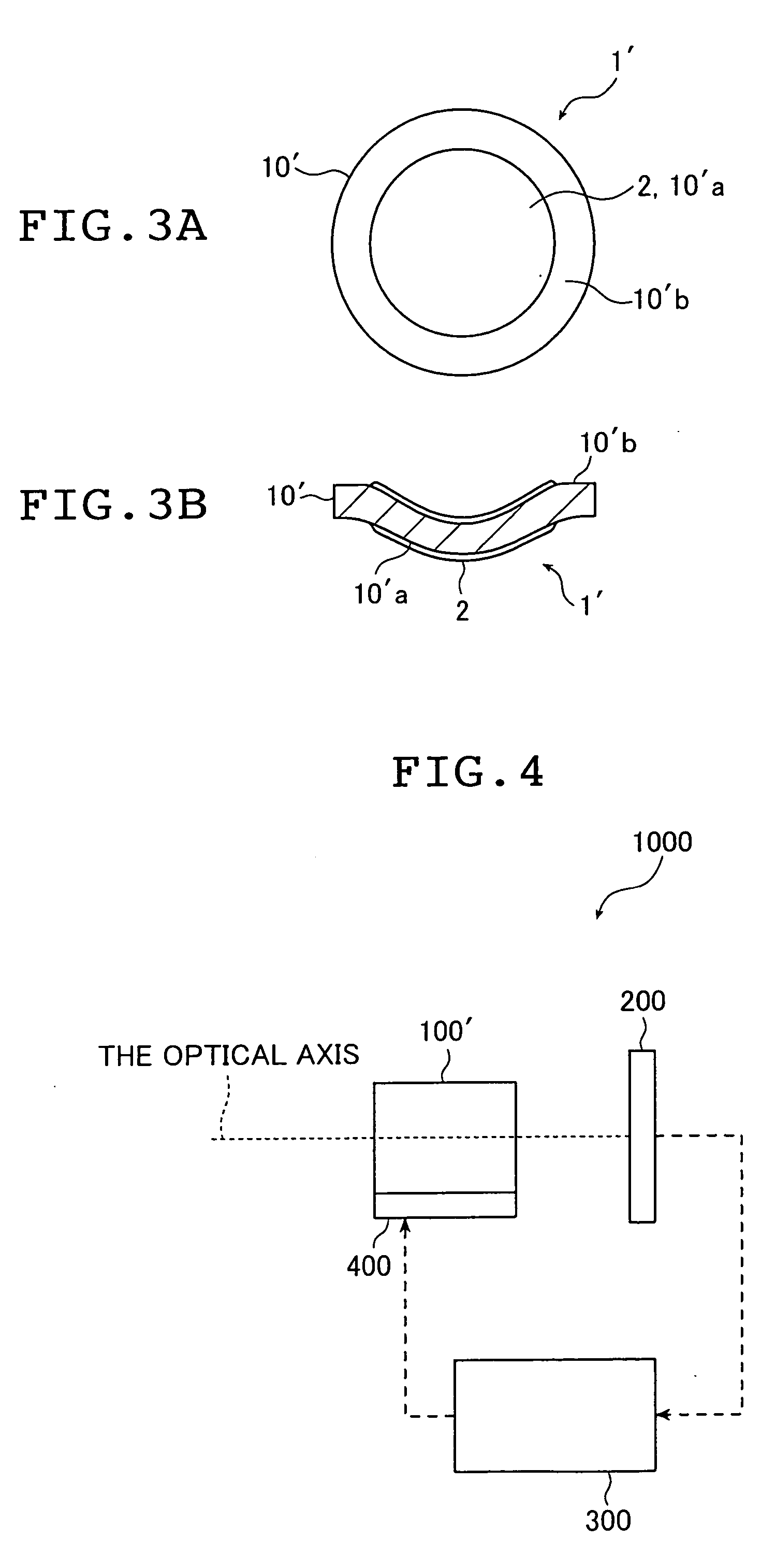Plastic optical components and an optical unit using the same
- Summary
- Abstract
- Description
- Claims
- Application Information
AI Technical Summary
Benefits of technology
Problems solved by technology
Method used
Image
Examples
example 1
[0154] In this Example, an optical component was fabricated like the optical component 1 shown in FIG. 1. Briefly, a lens 10 was made of a polycarbonate resin as the optical component's body and, on all of its surfaces, a moisture-proof coating 2 was formed of an organic-inorganic hybrid layer.
Forming the Organic-Inorganic Hybrid Layer
[0155] Eight grams of SOANOL D2908 (ethylene-vinyl alcohol copolymer of Nippon Synthetic Chemical Industry Co., Ltd.) was dissolved in a solvent system consisting of 1-propanol (118.8 g) and water (73.2 g) at 80° C. To a portion (10.72 g) of the resulting solution, 2.4 ml of 2N HCl was added and the two were mixed. To the stirred solution, 1 g of tetraethoxysilane was added and the mixture was kept stirred for 30 minutes. The coating solution thus obtained was then applied to all surfaces of the lens (optical component's body) 10 with a wire bar. The applied coating was then dried at 120° C. for 5 minutes until an organic-inorganic hybrid layer form...
example 2
[0164] By repeating the procedure of Example 1 except that the flange portion 10b was masked during forming the organic-inorganic hybrid layer, an organic-inorganic hybrid layer was deposited in a thickness of 1 μm to form a moisture-proof coating 2 on all surfaces of the polycarbonate lens (optical component's body) 10 excepting the flange portion 10b. Thus the optical component 1′ was obtained. This sample was assembled as an optical component 1′ to make the optical unit 100 shown in FIG. 2 and its optical performance was evaluated. The results are also shown in Table 1.
PUM
| Property | Measurement | Unit |
|---|---|---|
| Length | aaaaa | aaaaa |
| Thickness | aaaaa | aaaaa |
| Thickness | aaaaa | aaaaa |
Abstract
Description
Claims
Application Information
 Login to view more
Login to view more - R&D Engineer
- R&D Manager
- IP Professional
- Industry Leading Data Capabilities
- Powerful AI technology
- Patent DNA Extraction
Browse by: Latest US Patents, China's latest patents, Technical Efficacy Thesaurus, Application Domain, Technology Topic.
© 2024 PatSnap. All rights reserved.Legal|Privacy policy|Modern Slavery Act Transparency Statement|Sitemap



